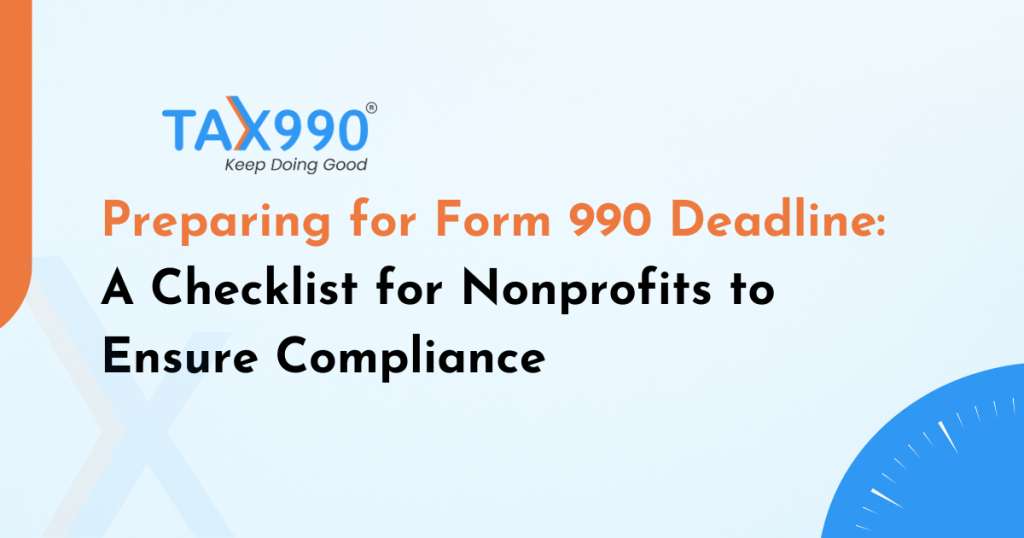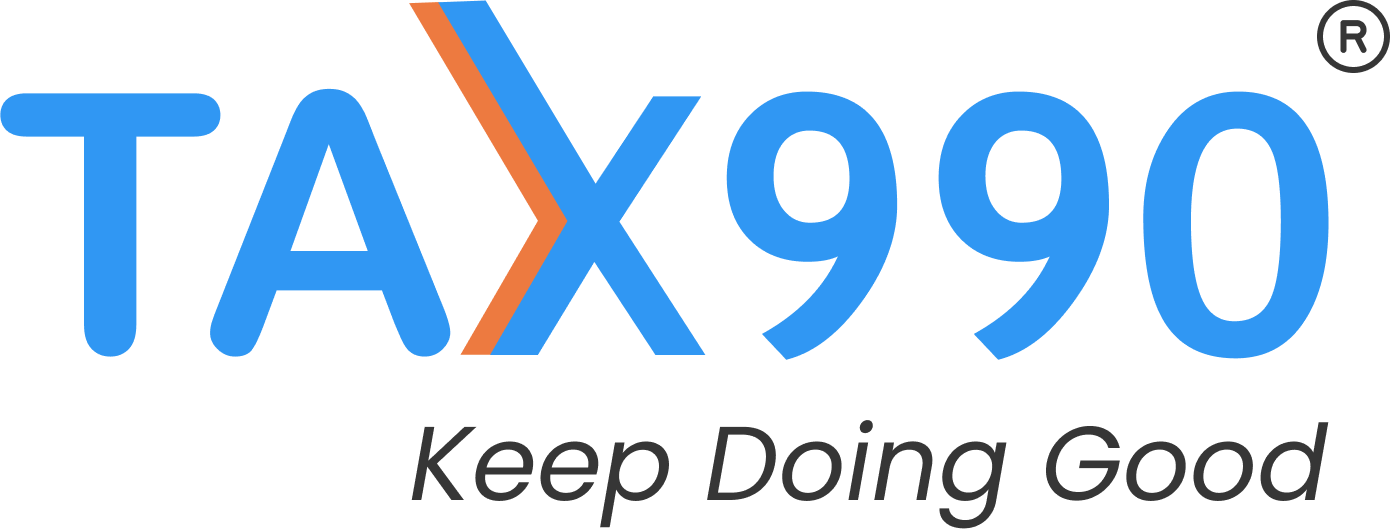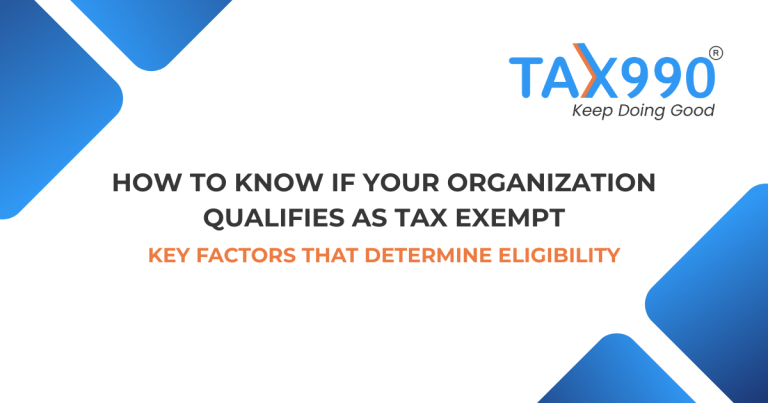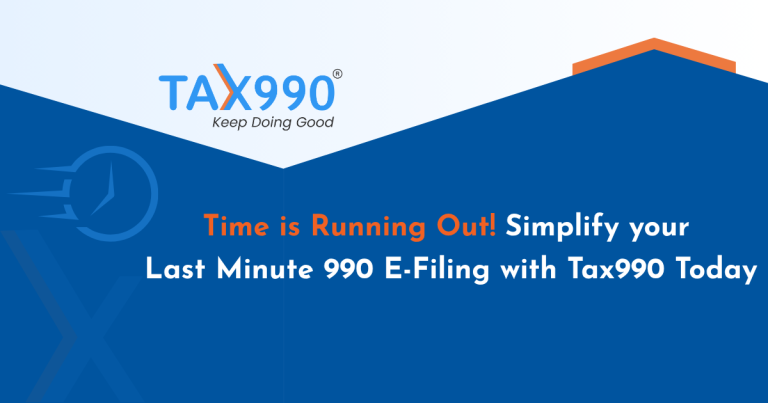Preparing for Form 990 Deadline: A Checklist for Nonprofits to Ensure Compliance
Estimated reading time: 19 minute(s)

Nonprofits thrive on trust, transparency, and accountability—and filing Form 990 on time is a key part of upholding these values. It’s your chance to showcase your nonprofit’s financial integrity, governance, and unwavering commitment to your cause.
With the IRS deadline (May 15) drawing near, ensuring your filing is both accurate and compliant can make all the difference. We’ve put together a streamlined checklist to help your nonprofit navigate this deadline effortlessly.
1. Determine the correct form to file
Your organization’s structure and financial activity dictate which version of Form 990 you are required to file. Identifying the correct form from the outset helps prevent IRS rejections, unnecessary delays, and compliance issues:
- Form 990-N (e-Postcard): For organizations with gross receipts normally ≤ $50,000.
- Form 990-EZ: For organizations with gross receipts < $200,000 and total assets < $500,000.
- Form 990: Required for organizations with gross receipts ≥ $200,000 or total assets ≥ $500,000.
- Form 990-PF: Mandatory for all private foundations, regardless of financial status.
- Form 990-T: Used to report Unrelated Business Income (UBI) over $1,000.
Filing the appropriate version not only ensures regulatory compliance but also reinforces your organization’s transparency and professionalism. Additionally, organizations may choose to file a more comprehensive version of Form 990 than required to provide greater visibility into their operations and strengthen donor trust.
2. Review the latest IRS updates
Form 990 is subject to periodic updates by the IRS, which may include revised schedules, new reporting thresholds, or additional questions related to governance, compensation, or financial disclosures. Filing an outdated version or overlooking recent changes can result in errors, rejections, or even compliance issues down the line.
Before you start filing:
- Visit the IRS website for the most recent version of the form and instructions.
- Take note of any new compliance mandates, thresholds, or questions.
- Confirm the correct tax year form is being used.
By staying informed and up to date with IRS changes, you help ensure a smooth, accurate filing process and uphold your nonprofit’s compliance standards.
3. Gather all required organizational data
Form 990 calls for a wide range of organizational, financial, and programmatic information. Having these materials on hand before you start can significantly streamline the filing process, reduce last-minute confusion, and minimize the risk of omissions or inaccuracies.
Be sure to collect and review the following:
- Audited financial statements or year-end financial reports
- A complete list of current officers, directors, and key employees
- Program accomplishments and related expenses
- Donor and grant details, if applicable (e.g., Schedule B)
Centralizing this information in advance enables a more efficient and accurate filing experience, helping you meet IRS expectations while demonstrating accountability to stakeholders.
4. Identify required schedules and supporting documents
Form 990 is not a standalone document—it often requires a series of supplemental schedules that provide greater detail on your organization’s financial activities, governance, and operations. These schedules vary depending on your nonprofit’s structure, size, and specific programs, making it essential to identify the ones relevant to your filing early in the process.
Click here to learn more about 990 Schedules.
In addition, if your organization earns $1,000 or more in gross income from unrelated business activities, you’re also required to file Form 990-T (Exempt Organization Business Income Tax Return). Reporting unrelated business income accurately is crucial, as it directly affects your tax liability and overall compliance.
5. Plan for board review and approval
For many nonprofits, board oversight is a critical component of sound governance and accountability. Incorporating a formal review of your Form 990 by your board of directors—or an appointed officer—not only strengthens internal controls but also reinforces your commitment to transparency.
To ensure an effective review process:
- Set aside time for the board (or a designated officer) to review the draft return
- Incorporate feedback and document the approval process
- Maintain a record of the review in board meeting minutes, if applicable
This not only builds internal trust, but it also signals strong governance practices to donors, grantors, and the public.
6. Confirm e-signature authorization
Before submitting Form 990 electronically, the IRS requires authorization from an official representative of your organization. This authorization validates the accuracy and integrity of your return.
To ensure compliance:
- If e-filing through a provider, use IRS Form 8453-TE.
- Ensure the signer has the authority to approve the return on behalf of the nonprofit
- This step is crucial for IRS acceptance and legal verification of your return’s authenticity.
This step is not just procedural—it’s essential for legal compliance and successful IRS acceptance of your Form 990.
7. Maintain accurate and complete records
Good recordkeeping is more than just a best practice—it’s a critical component of long-term compliance and organizational integrity. Thorough, well-organized records not only simplify future filings—they also protect your organization in the event of an IRS audit or public inquiry, reinforcing your nonprofit’s transparency and accountability.
- Store financial records, donation receipts, payroll documents, and correspondence
- Keep records for at least three to seven years, depending on state and federal guidelines
- Ensure all information reported on Form 990 can be substantiated by documentation
- In case of an audit or public inquiry, comprehensive records support your organization’s credibility and compliance.
8. Retain proof of submission and IRS acknowledgment
After submitting your Form 990, it’s important to document the process for accountability and future reference:
- Save the electronic filing receipt that confirms the successful transmission of your return.
- Keep a copy of the IRS acknowledgment notice verifying that your return has been accepted.
- Archive both digital and physical copies of your submitted return and related documentation.
Maintaining this proof ensures your organization can demonstrate compliance in the event of an audit, donor inquiry, or review by regulators, underscoring your commitment to transparency and diligence.
Tax990—meet this May deadline with confidence
After all, your Form 990 isn’t just about ticking boxes—it’s an opportunity to demonstrate to the world just how transparent, dedicated, and mission-driven your organization truly is.
That’s where Tax990 makes the difference.
Our platform is built to simplify nonprofit filing. With pre-filled data, real-time error checks, guided workflows, and responsive support, Tax990 ensures your return is accurate, timely, and IRS-accepted—every time.
Backed by the Tax990 Commitment, you’ll receive the support you need at every step and get your forms accepted, with no hidden fees or surprises—just seamless, stress-free compliance. Click here to learn more about the Tax990 commitment.
Start today and file with confidence—your mission deserves nothing less.





Leave a Comment